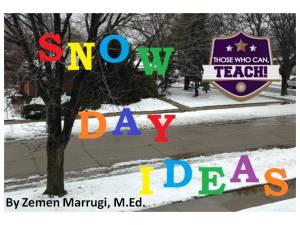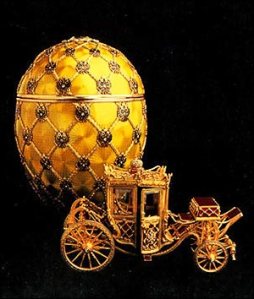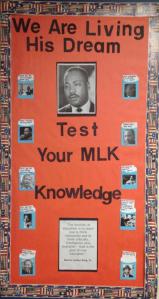By Zemen Marrugi, M.Ed.
Everyone loves an unexpected Snow Day every now and then. However, it is easy to run out of ideas on how to keep your children busy throughout the cold day, while at the same time keeping the content educational. Here are some fun activities to do with your children on the next unexpected Snow Day.
Crafts Corner
Take some construction paper, glue and markers and get creative with your child. If you are short on supplies, recycle old newspapers and make a papier-mâché project. Another inexpensive project would be to make a snowflake banner out of copy paper. Have a conversation on why it is important to recycle.
Couch Potato Movie
Get a couple of blankets and enjoy a movie of their choice. If you have more than one child, have them each add a movie title in a cup and randomly pick one for the whole family to enjoy. Use this moment to review their elapsed time skills. If we start the movie at 3:00PM and it will last an hour and a half, then when will the movie finish? Also, if we only have three hours before dinner, then how many movies can we watch?
Baker’s Delight
Nothing says snow day like the smell of freshly baked cookies. Have your child help you make breakfast, lunch or prepare the table for dinner. Utilize this time to review their measuring skills by using related vocabulary throughout the whole process like cups, quarts, gallons, etc. Do fun things like encouraging them to figure out how many cups are in a quart by pouring liquids from one into the other.
Write a Letter
Help your child write a friendly letter to their grandparents or a friend that moved away. This will help them practice what a friendly letter includes and also give them a great opportunity to keep in touch with a loved one. FYI-A friendly letter includes the date, heading, greeting, body, closing and signature.
Virtual Museums Tours
Some museums have virtual tours on their websites. Take a tour and learn something new with your child. Parents should also monitor local museums for any special exhibits coming to town regarding their child’s area of interest and grade level content.
Spelling Word Games
Keep a folder of your child’s spelling words for the whole year and review them throughout the school year. On days like this, take out the words and make a game out of them. For every word spelled correctly, they can earn a minute towards an incentive of their choice like playing their video games. Also, you can also place each word on an index card and have them practice putting them all in alphabetical order.
Make a Snow Man
Bundle up and let Frosty greet all of your neighbors with his corncob pipe and button nose. Have fun making a snow man and snow angels with your children and remember to take lots of picture because these are the moments they will cherish for many years to come.
Snow Candy
Growing up, my siblings and I loved eating the snow. Drizzle some syrup on the white snow and have fun comparing old fashion candy with today’s traditions. This can be a great lesson on discussing how modern technology has changed the way candy is made today. You can also take this time to add a quick Science lesson by analyzing the tiny snowflakes. Get a magnify glass and have your children critique different snowflakes and before you know it, they will realize that no two snowflakes are alike.
Flash Cards
Flashcards are easy and inexpensive to make and can be used for review of alphabets, vocabulary, colors, and shapes. Regardless of your child’s age, flash cards are a great way to review grade level content material. Place a vocabulary word on one side and the definition on the other side.
Educational Websites
Most schools are purchasing online subscriptions for their students to websites like studyisland.com, Accelerated Reader, Accelerated Math, etc. These websites provide personalized assignments to students based on grade level. A personal record is kept of each student’s completed assignments so parents can monitor growth and give their child an opportunity to complete additional work for much rigorous instruction.
Snow Days can be unexpected, but if you prepare some of these projects in advance, then it can also be a great opportunity to teach your child something new. I recommend you complete some of these items in advance and store them in small plastic bags. These activities can also be fun during the weekends. Remember, above all things, keep it fun, keep it educational and keep taking those pictures because these are priceless childhood memories that they will love to look back on when they get older.
About Zemen Marrugi
Zemen Marrugi is the Founder/President of Those Who Can, Teach! and an experienced teacher and national presenter. Marrugi has worked as a classroom teacher and has presented workshops on topics like differentiated instruction and the writing process. In addition to working with elementary/middle school teachers, Marrugi has also presented workshops for college activities personnel at the Council for Advancement and Support of Education’s Association for Student Advancement and the National Association for Campus Activities. Click here for more information on Zemen Marrugi.





